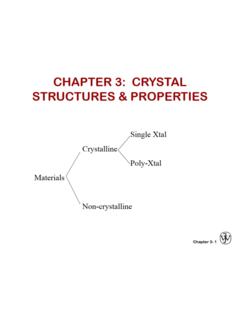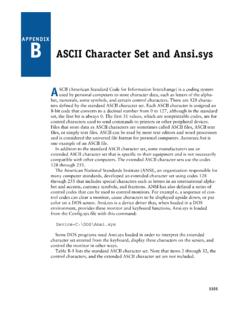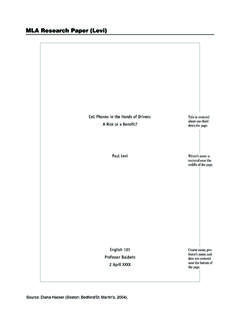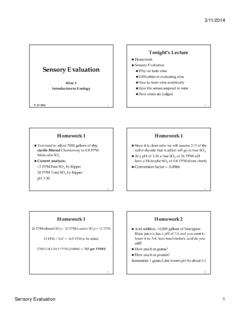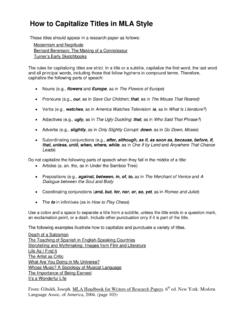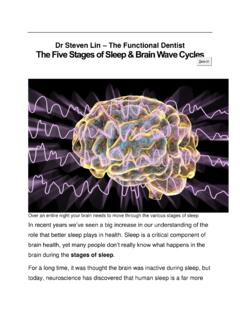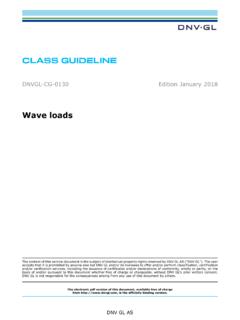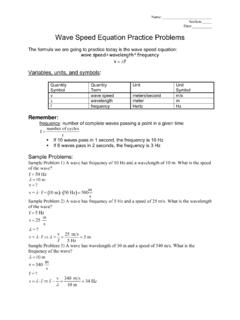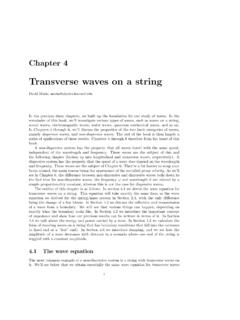Transcription of Wave Equation Derivation - Home | Santa Rosa Junior College
1 000 0 EBBEEB ttSimple Derivation of Electromagnetic waves from Maxwell s Equations By Lynda Williams, Santa Rosa Junior College Physics Department Assume that the electric and magnetic fields are constrained to the y and z directions, respectfully, and that they are both functions of only x and t. This will result in a linearly polarized plane wave travelling in the x direction at the speed of light c. ( , )( , ) and ( , )( , )E x tE x t jB x tB x t k We will derive the wave Equation from Maxwell s Equations in free space where I and Q are both zero. Start with Faraday s Law.
2 Take the curl of the E field: ( , ) =0( , )0ijkEE x t jkxyzxE x t Equating magnitudes in Faraday s Law: (1)EBxt This means that the spatial variation of the electric field gives rise to a time-varying magnetic field, and visa-versa. In a similar fashion we derive a second Equation from Ampere-Maxwell s Law: Take the curl of B: 00 ( , ) = (2)00( , )ijkBBEB x t kjxyzxxtB x t This means that the spatial variation of the magnetic field gives rise to a time-varying electric field, and visa-versa. Take the partial derivative of Equation (1) with respect to x and combining the results from (2): 220 00 022 = EBBEExx tt xttt 220022 EExt (3) In a similar manner, we can derive a second Equation for the magnetic field: 220022 BBxt (4) Both equations (3) and (4) have the form of the general wave Equation for a wave ( , )xt traveling in the x direction with speed v: 222221 xvt.
3 Equating the speed with the coefficients on (3) and (4) we derive the speed of electric and magnetic waves , which is a constant that we symbolize with c : 8001 10/cxm s The simplest solutions to the differential equations (3) and (4) are sinusoidal wave functions: maxmax( , )cos() (5)( , )cos() (6)E x tEkxtB x tBkxt where k = 2 / is the wavenumber , = 2 is the angular frequency, is the wavelength, f is the frequency and /.kfv c . Taking partial derivatives of E and B and substituting into (1): maxmaxsin()sin() kEkxtBkxt maxmaxmaxEBcBk .EcB At every instant, the ratio of the electric field to the magnetic field in an electromagnetic wave equals the speed of light. The rate of energy transfer by an electromagnetic wave is described by the Poynting vector, S, defined as the rate at which energy passes through a unit surface area perpendicular to the direction of wave propagation (W/m2): B For a plane electromagnetic wave: 22000 EBEcBSc.
4 The time average of S over one or more cycles is called the wave intensity, I, which gives the very important result that the intensity of a light wave is proportional to the square of the amplitude of the electric or magnetic fields: 22maxmax0022aveEBIScc (The comes from averaging the cosine squared terms.) Intensity is a measureable real quantity that has primary significance in all wave phenomena. Intensity is the loudness of a sound or the brightness of a light. Intensity will serve as an important conceptual analog in our study of quantum physics in the following way: Intensity is to the electric field as probability is to the wave function. Yum! maxmaxsin() and sin() EBkEkxtBkxtxt
